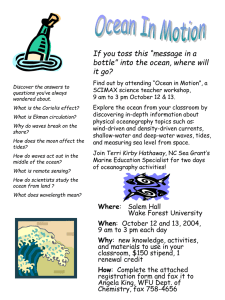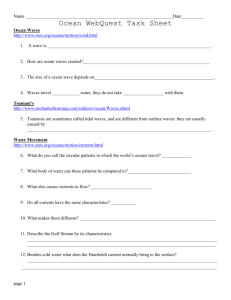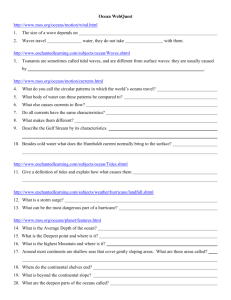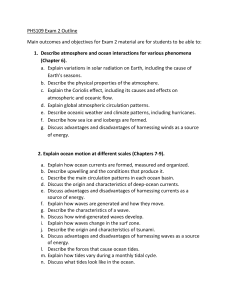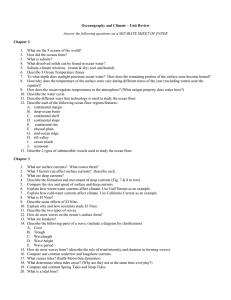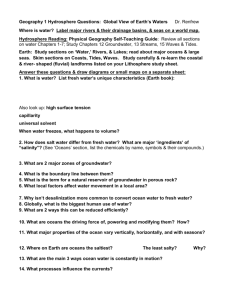Ocean Motion: Currents, Tides, and Waves Activity
advertisement
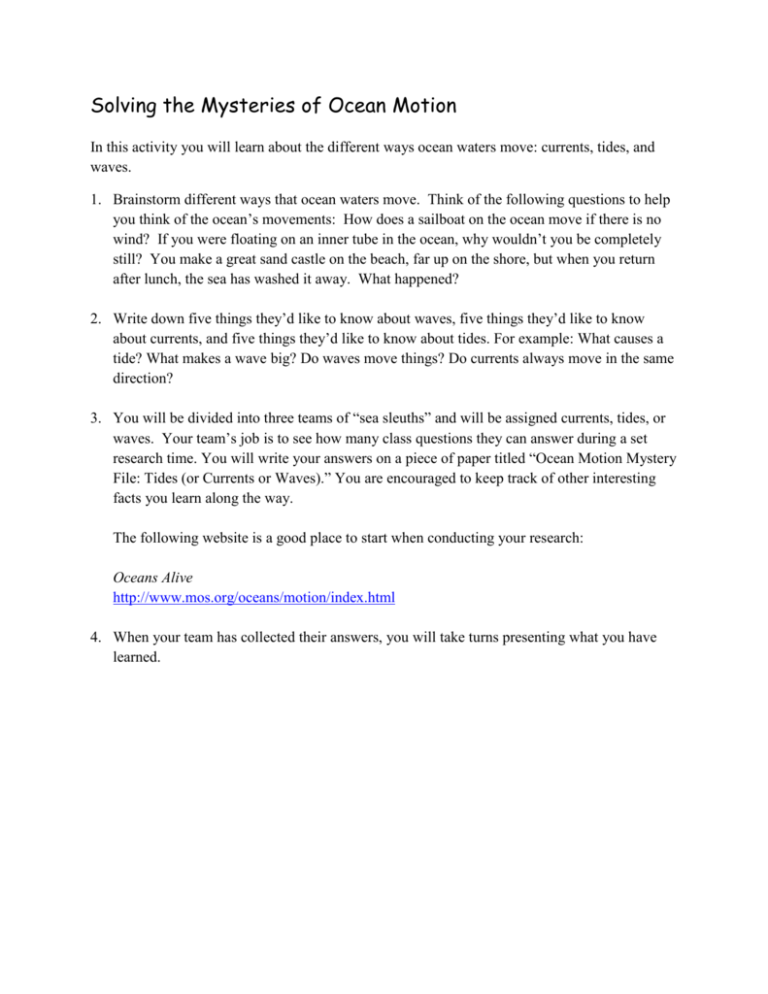
Solving the Mysteries of Ocean Motion In this activity you will learn about the different ways ocean waters move: currents, tides, and waves. 1. Brainstorm different ways that ocean waters move. Think of the following questions to help you think of the ocean’s movements: How does a sailboat on the ocean move if there is no wind? If you were floating on an inner tube in the ocean, why wouldn’t you be completely still? You make a great sand castle on the beach, far up on the shore, but when you return after lunch, the sea has washed it away. What happened? 2. Write down five things they’d like to know about waves, five things they’d like to know about currents, and five things they’d like to know about tides. For example: What causes a tide? What makes a wave big? Do waves move things? Do currents always move in the same direction? 3. You will be divided into three teams of “sea sleuths” and will be assigned currents, tides, or waves. Your team’s job is to see how many class questions they can answer during a set research time. You will write your answers on a piece of paper titled “Ocean Motion Mystery File: Tides (or Currents or Waves).” You are encouraged to keep track of other interesting facts you learn along the way. The following website is a good place to start when conducting your research: Oceans Alive http://www.mos.org/oceans/motion/index.html 4. When your team has collected their answers, you will take turns presenting what you have learned.
